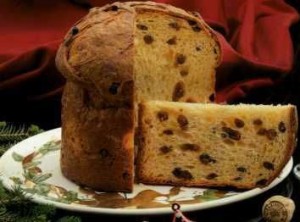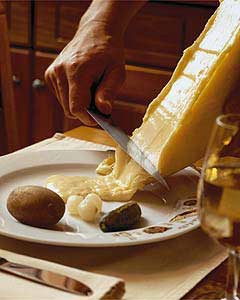Happy Holidays from Promega employees around the world! This holiday season we are excited to share with you the kinds of celebrations we enjoy in the many countries that comprise the Promega family. We hope you feel more connected by reading about the festive customs, foods, symbols and events celebrated in countries that may be far from your own home. Here they are, in the words of our marketing and technical services colleagues.
Please note this is Part I of a two-part blog post. Please look for Part II to be posted on December 25, and have a wonderful holiday!
Italy
Maura Bozzalli, Marketing Manager
Christmas is very important in Italy, not only because we are the country with the Pope, but also, as in the rest of the world, it is a day dedicated to the family and the children. The celebration starts with dinner on Christmas Eve and goes on with the lunch on Christmas Day with gift exchanges as well.
But Christmas is not a real Christmas without a Panettone on the table. Panettone is a special sweet/dessert, not a cake, not a bread, and not anything else – it is Panettone! It has a rounded and very tall cylinder shape (20 cm), and originally it was from the Milan area but now it has spread out all over the country. As is typical of our country, each region has created its own version of the original recipe and of course claims that it is the best one! 
Panettone takes more than two days of work to be done because it requires a long time for rising (10-12 hours) twice. Another typical note about its preparation – after cooking in the oven it is removed with a long fork and placed upside down for at least 5-10 hours until cold to prevent the humidity inside the Panettone from causing it to collapse. That is why it is saved for very special occasions like Christmas, and after so much work and time it is a pleasure to share it with the people you love. Today, not many people make it themselves at home; instead Panettone is bought in shops but the taste and the tradition is still very lively.
Here all the ingredients needed to make a real Panettone: water, flour, salt, eggs and egg yolk, milk, butter, sugar, candied fruit (orange and citron), raisins, vanilla, and yeast. The official recipe is in Italian, but this tutorial can help you make a Panettone if you want to try for your own very special 2015 Christmas.
Benelux
Hans Penning, Marketing Manager
In the Netherlands, the holiday season starts more or less on November 11, Saint Martin’s Day. On that day kids make lanterns and go door to door to sing a song and earn candy. The weekend after Saint Martin’s Day, Saint Nicholas arrives in the Low Countries by steamship from Spain. His steamship is packed with gifts and from that day on, kids receive small present once or twice a week until December 5 and 6. That’s when Sinterklaas, as he is called in Dutch, celebrates his birthday. Now it’s time for the big presents! Santa visits schools, clubs, pubs, and homes. It’s a huge thing with special pastry and candy.
After December 6, families start decorating their homes for Christmas – mainly a Christmas tree and other ornaments. Wintermarkets are organized and ice skating courts are opened. We typically celebrate Christmas with our families with a festive dinner and a few small gifts.
New Year’s Eve is also a big happening with champagne and special greasy pastry called “oliebollen.” At midnight we celebrate the New Year with fireworks. We party till late… The party continues in the first week of January until January 6 (Epiphany). As a festive closure of the holiday season, we organize bonfires where we burn our Christmas trees.
Australia
Teresa Lyons, Technical Services Scientist
Picture this (which I think is difficult for anyone living in the Northern Hemisphere):
- Santa Claus in shorts and a tropical print shirt or a cossie (short for ‘swim costume’) and often wearing a wide-brimmed hat instead of the usual red and white “pom-pom” one. He may be surfing.
- Bright sun and very warm weather; heaps of people at the beach on the day (mostly tourists). I believe New Year’s Day is the most crowded day on the beaches by far. If you have a pool at home then it’s often a tradition to jump in that day.
- Santa’s sleigh being pulled by kangaroos instead of reindeer. These are often shown as six large white male kangaroos (boomers) in illustrations and there’s a song called Six White Boomers .
- Extended families getting together for a Christmas lunch dominated by fresh seafood or barbequed food instead of heavy roasts and potatoes.
- Pavlova or trifle for dessert. The Pavlova is typically festooned with in-season fruit such as cherries, berries or passion fruit. Though mince pies and puddings (from English tradition) are still done as well.
- A Christmas cracker at every table setting.
Switzerland
Martina Kraft, Sales & Marketing Assistant
For the holiday season in Switzerland the Advent wreath symbolizes the passage of the four weeks of Advent in the liturgical calendar of the Western church. The Advent calendar (in most cases it is filled with chocolate) counts the days, starting December 1, in anticipation of Christmas.
Switzerland celebrates by baking tons of “Weihnachtsguetzli” (Christmas cookies) e.g. star-shaped cinnamon cookies, macaroons, sablés (from the French influenced region), Spitzbuben, Mailänderli, Basel chocolate balls (Basler Brunzli), gingerbread, Chräbeli (made with anise), Schüfeli, and much more.
On December 6 Samichlaus (Saint Nicolaus) and Schmutzli (his companion) come to town. You have to recite a Christmas text or song in order to get your sweets. In addition, you will get during this time the so called “Grittibänz.” 
On December 24 (Heiligabend, or Christmas Eve) families get together to decorate their tree, usually a European spruce. Underneath you set up the manger scene and the rest is decorated similar as in the States (balls, sweets, candles – some still use real candles for the tree, quite dangerous but really pretty!). The swag is usually “angel hair” to prove that Baby Jesus (Christkind) was here to bring the presents. Then, you have to recite a Christmas text or song to get your presents.
Typical holiday foods in Switzerland include raclette, fondue chinoise or rolled ham. In the Italian part of the country “Panettone” is very traditional. On the following two Christmas days (Dec 25 and 26) you usually visit family and friends in order to eat even more!
Nicole Sandler
Latest posts by Nicole Sandler (see all)
- Writing Scientific Papers: Is There More To This Story? - February 3, 2017
- Top Science Books of 2016 - January 4, 2017
- The Role of the NanoLuc® Reporter in Investigating Ligand-Receptor Interactions - December 5, 2016

One thoughtful comment